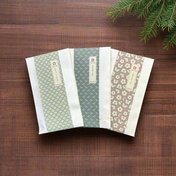Shop Here for 2015 Shincha Tea
Spring equinox has passed and we can finally feel the warmth of spring.
It is time to officially begin the spring trimming.
In the “trimming” process, plucking surface is equally trimmed to avoid old leaves and twigs from getting mixed with the new buds when harvested with a machine; and to trim and prepare the tea tree right now (in Spring) for the first flush tea is called “spring trimming”.
In a much warmer region this process is completed in autumn and is known as “autumn trimming”.
Unlike autumn trimming, “spring trimming” will enable the leaves to pass the winter, and this has a positive effect in terms of nutrient accumulation. In addition, it helps protect the plucking surface of the first flush tea from being affected by the cold.
Although the harvesting period for first flush tea will be delayed, the tea becomes “gajugata芽重型”, meaning that there will be less tea buds in one tree but every leaf on the tree will be better in size and quality.
It is said that about 50 days prior to the estimated germination period is the proper timing for “spring trimming”.
In Saitama Prefecture, most tea buds sprout between mid to late April so calculating from this, the best time for spring trimming will be between mid-March to early April.
If the timing is too early, trim surface will be damaged by the cold weather, and if too late it will lead to a delay in harvesting the first flush tea.
Therefore, the spring trimming is a very important process for shincha.

The post Yokota Blog: 50 days before the estimated germination period appeared first on YUNOMI.

